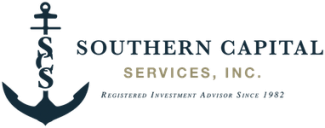
How High Earners Can Maximize Their Retirement Savings
by Eric Nager on Jul 10, 2019
If you’ve been blessed with a high income, you may think that you’re maximizing your savings if you’re contributing the maximum amount to your retirement plan and IRA. But there are some little-known strategies you can use to bolster your retirement savings. The information below is a starting point for discussions with your financial advisor and tax professional based on your situation. This is for informational purposes only and does not constitute tax advice.
1. Know the Maximum 2019 Contribution Limits for Retirement Plans and Health Savings Accounts.
Retirement Plan Contribution Limits for 401(k), 403(b), and most 457 plans
$19,000 (under age 50)
$25,000 (age 50 or older)
Employers can make a matching contribution or profit sharing contribution up to 25% of compensation up to a maximum of $56,000
Total employer/employee contributions cannot exceed $56,000; $62,000 if age 50 and older
Retirement Plan Contribution Limits for SEP and SIMPLE IRAs
SEP Employee Contributions: N/A
SEP Employer Contributions: Up to 25% of compensation up to a maximum of $56,000
SIMPLE Employee Contributions: Up to $13,000 in salary deferrals; $16,000 if age 50 or older
SIMPLE Employer Contributions: Employers can either make a matching contribution of 1-3% of an employee’s salary OR make a non-elective contribution of 2% of an employee’s salary up to $5,600
Health Savings Accounts (HSAs)
Employee and Employer Maximum Contributions: $3,500 for individuals;$7,000 for families. People 55 and older can contribute an additional $1,000. To qualify for an HSA, your health insurance policy must have a deductible of at least $1,350 for individuals or $2,700 for family coverage.
2. Know the Maximum 2019 Contribution Limits for IRAs
IRA Contribution Limits (Traditional and Roth)
$6,000 (under age 50)
$7,000 (age 50 and older)
3. Know the Roth IRA Income Phaseout Limits for 2019
Income Eligibility Requirements for a Roth IRA
| Filing Status | Modified adjusted gross income (MAGI) | Contribution Limit |
|
Single individuals |
< $122,000 |
$6,000 |
|
≥ $122,000 but < $137,000 |
Partial contribution |
|
|
≥ $137,000 |
Not eligible |
|
|
Married (filing joint returns) |
< $193,000 |
$6,000 |
|
≥ $193,000 but < $203,000 |
Partial contribution |
|
|
≥ $203,000 |
Not eligible |
|
|
Married (filing separately) |
Not eligible |
$6,000 |
|
< $10,000 |
Partial contribution |
|
|
≥ $10,000 |
Not eligible |
4. A “Backdoor Roth” Allows High Earners to Qualify for a Roth IRA
If your income level exceeds the allowable amount to qualify for a Roth IRA, you can use the back door Roth strategy if a Roth IRA is appropriate for you. You would make a nondeductible contribution for the maximum allowable amount into a Traditional IRA ($6,000 if you’re younger than 50, $7,000 if you’re 50 or older). Then you would convert your Traditional IRA into a Roth IRA. This is generally a taxable event in which you pay ordinary income tax on the amount you convert into the Roth IRA, but all earnings and growth in the Roth IRA after the conversion will be tax-free after they’ve been in the account for five years. In addition, Roth IRAs owners aren’t subject to required minimum distributions (RMDs), but their beneficiaries who inherit the Roth IRA will be required to take RMDs.
High income earners who have traditional IRAs, SEP IRAs, and/or SIMPLE IRAs from a previous employer can also convert these accounts to Roth IRAs. You’ll want to discuss this with your tax professional to see if you want to spread the conversion out over multiple years to avoid a large tax liability in a single year, especially if the conversion could bump you into a higher tax bracket.
5. A "Mega Backdoor Roth” Allows High Earners to Maximize Retirement Plan Contributions
Another little-known strategy allows high earners to use after-tax contributions to a 401(k) to fund a Roth IRA. It’s called a mega backdoor Roth because the dollar amounts involved are typically large.
Example: A 50-Year Old Employee Contributes the Maximum to a 401(k)
Employee Maximum Contribution: $25,000
Employer Matching Contribution: $12,500
Total Contribution: $37,500
How can this individual reach the $62,000 limit for 2019 for employees 50 or older?
The employee can make after-tax contributions to contribute an additional $24,500
($62,000 limit –$25,000 employee contribution –$12,500 employer contribution = $24,500)
Why would someone want to do this?
High-income individuals who otherwise aren’t eligible for a Roth IRA can rollover the after-tax contributions they make in a 401(k) into a Roth IRA.
How does it work?
Call your 401(k) provider and ask if your plan offers after-tax contributions. If it does, ask if the plan permits you to rollover your after-tax contributions into a Roth IRA (i.e., in-service withdrawals or in-plan conversions). According to a survey by the Profit Sharing Council of America, more than 70% of 401(k) plans allow in-service withdrawals,1 so it’s likely your plan offers this feature.
More than 70% of plans allow in-service withdrawals according to a survey by the Profit Sharing Council of America.
You would then increase your 401(k) contributions so that when your pre-tax contributions are exhausted, all additional contributions would fund your after-tax sources until you hit the maximum allowable limit. Once you have a sufficient amount in after-tax sources, you could roll the after-tax dollars into a Roth IRA.
If you’ve been making after-tax contributions for years and haven’t made any in-service withdrawals, you may have a sizable amount in your after-tax sources. If you choose to roll all or part of this money over to a Roth IRA, the IRS requires your withdrawal to be a combination of your after-tax contributions and the earnings on those contributions.
In fact, your 401(k) provider will likely mail you two separate checks—one for the after-tax contributions and a second one for the after-tax earnings on those contributions. After-tax contributions can be rolled over to a Roth IRA tax-free as long as the check is made payable directly to the firm where you’re rolling over the assets to. After-tax earnings can be rolled over to a Traditional IRA tax-free. If you want to move your after-tax earnings into a Roth IRA, that would be a taxable event.
The calendar year after your IRA rollover takes place, your 401(k) provider will report the rollover on Form 1099R in January, and the firm that receives the IRA rollover will report it on Form 5498 by May 31. These tax forms are generated for reporting purposes only.
Roth 401(k) Contributions vs. After-Tax Contributions
The Roth component of a 401(k) is available to individuals of all income levels. Roth contributions are funded with after-tax contributions and the earnings compound tax-free. When you ultimately withdraw money from a Roth 401(k), the distributions are generally tax-free once you’ve held the account for five years or attained age 59½ (whichever of these events is later). Penalty-free withdrawals are permitted if an individual dies or becomes permanently disabled. Unlike Roth IRAs, Roth 401(k)s are subject to RMDs, but the withdrawals are tax-free.
Like the Roth 401(k), after-tax contributions within a 401(k) are funded with after-tax dollars. But while Roth contributions compound tax-free, earnings on after-tax contributions compound tax-deferred. Withdrawals of after-tax contributions are tax-free after age 59½, while withdrawals of the earnings on those contributions would be taxable.
Given the significant advantages of a Roth 401(k), investors typically choose to maximize their contributions to a Roth 401(k) before opting to make after-tax contributions to their 401(k).
Who would this strategy be appropriate for?
This strategy may be appropriate for you if your income is high and you’ve already funded your retirement plans, IRAs, and HSAs with the maximum dollar amounts. Once this occurs, you can either invest additional dollars through a nonqualified account if you think you’ll need access to your money prior to age 59 1/2, or you can use the mega back door Roth conversion strategy if you’re ready to earmark the money for retirement.
If you decide to implement this strategy, you should consider doing an annual rollover of your after-tax contributions into a Roth IRA to help limit the amount of earnings on your after-tax contributions that will eventually be subject to tax.
To Learn More About Maximizing Your Retirement Savings, Talk To Your Financial Advisor And Tax Professional.
